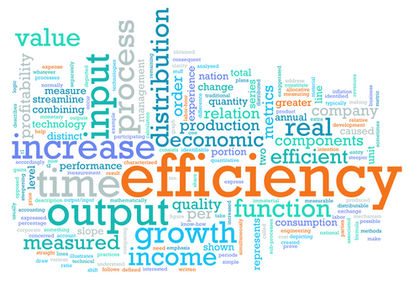By Anik Jain.
Continued economic uncertainty, geopolitical tensions, stubborn inflationary trends and high interest rates are impacting everything from supply chains and vendor relationships to the labor force and the workplace. As a result, finance leaders find their departments squarely in the spotlight—keeping a closer eye on their balance sheets, taking fewer risks, and focusing more on efficiency and value over growth. Accounts Payable (AP), in particular, has become ground zero as liquidity and cash flow become even more indispensable.
In a recent survey of North American finance leaders by payment automation provider MineralTree, 59% of respondents cited their top concern in this economic climate as the need to do more with less, followed by reducing AP processing costs (49%), improving their ability to manage cash flow (43%), and gaining better visibility into their current cash position (42%).
Despite these pressures, finance leaders looking to staff up are facing difficulties. Almost half anticipate hiring challenges or delays. Additionally, many AP teams continue to work remotely, at least part of the time. The MineralTree survey found that 68% of AP work environments are hybrid or fully remote now with that number expected to further increase to 72% in the coming year. This makes it even more difficult for staff to physically collect invoices and route them manually for approvals and authorize and make payments.
AP automation is a key strategy for many finance leaders
In the survey, finance leaders ranked AP automation as their top digitization priority in the back office—ahead of Accounts Receivable (AR), expense management, close management, and forecasting. 52% of AP teams plan to adopt or invest more in automation this year, seeing the opportunity to increase productivity, better manage cash flow and reduce risk, among other benefits.
While few respondents in the survey claim to have automated all of their AP processes, AP automation holdouts are in the minority. For those who have begun, the most digitized AP task is invoice approval/workflows (71%), followed by invoice data capture and coding (66%), payment execution (58%) and payment authorization (58%), among others. And they report substantial benefits as a result:
- 85% have realized efficiency gains.
- 63% are making faster, more timely payments.
- 58% are able to absorb a growing volume of invoices and payments with the same-sized team.
- 24% have reallocated freed-up staff time to other projects.
- 17% are processing the same volume of invoices and payments with a smaller team.
In addition to these productivity gains, AP automation also offers real-time dashboards for much-needed visibility into cash flow and working capital.
Digital payments also play an important role
Since paper-based checks take time to prepare and mail, it is difficult for AP teams to know exactly when these payments will clear. This not only impedes cash flow planning, it can also lead to late payments and associated fees. Conversely, digital payments—in the form of wire, ACH or virtual cards—give finance leaders greater predictability over cash flow. AP teams can time the withdrawal of funds for payment within 24-48 hours depending on the method used and, depending on the funding model supported by their vendor, maintain access to their cash until that time. Digital payments also make it easier for finance teams to take advantage of early payment discounts.
Both buyers and suppliers surveyed by MineralTree value digital payments. Seventy percent of the AP teams surveyed plan to increase digital payments over the coming year. The great majority of vendors (79%) also want to receive digital payments. One key reason for this is that a large majority (76%) believe that when buyers pay digitally, they are more likely to pay on time.
Embrace automation in 2024
If you haven’t started automating yet, now’s the time to begin. If you already automated some AP processes, extend the benefits by digitizing others. Only 20% of AP teams have fully automated their processes, so there’s plenty of room for improvement.
When companies automate AP, they are more likely to adopt digital payments, and the synergies they achieve across the entire invoice-to-pay process compound the benefits they receive. End-to-end automation increases efficiencies so they can do more with less according to 89% of finance leaders. It enables faster, more timely payments which helps keep vendors happy; provides greater visibility and control to manage cash flow; reduces costs and streamlines reconciliation; and protects against fraud.
The last few years have taught businesses and consumers alike to be prepared for the unexpected – whether it is a pandemic, bank failure, inflation and monetary volatility, supply chain challenges, or other surprises. Savvy finance leaders are turning to automation and digital payments to crisis-proof their AP function and gain the insight and agility they need to be successful in any economic environment.
————
Anik Jain is a senior product marketing manager for MineralTree, a Global Payments company. In his role, he studies evolving customer, market and industry trends to support MineralTree’s product development and communication efforts in the AP and payment automation space. He has over 20 years in B2B product marketing and consulting including key contributions at Pitney Bowes, Verizon and PayStream Advisors.
Thanks for reading CPA Practice Advisor!
Subscribe Already registered? Log In
Need more information? Read the FAQs
Tags: Small Business




